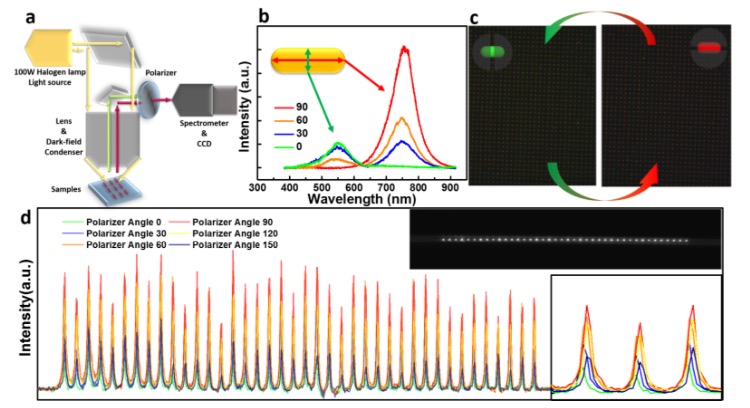Presenter: Prof. Paul Mulvaney
Topic: GoldNanocrystals - Electron Detection, Electrochemistry and Large Scale Arrays
Time: 09:00a.m., Dec.30th(Friday)
Location: ConferenceRoom B, BLDG 909
Abstract:
Nanoscale semiconductor and metal nanocrystals exhibitsize dependent absorption, scattering and emission spectra. We discuss twoimportant challenges. The first is monitoring electron transfer from metalnanocrystals, which we demonstrate at the single particle level. The largerchallenge is controlled assembly. Typically, single nanocrystals are studiedusing confocal microscopy or dark field microscopy. The nanocrystals arespin-coated from solution onto substrates at random, which makes analysis andarchiving tedious. Such nanocrystals cannot be routinely addressed by the user.To utilise these novel materials in optical or electronic devices, methods areneeded for assembly of nanocrystals into ordered structures.

Fig. 1Left- Experimental dark-field microscope set-up for single particlespectroscopy. Top Right: Deposited gold rods are aligned and exhibitensemble-averaged polarisation-dependent spectra. Bottom: Intensity map acrossa row of gold rods as a function of polariser angle showing uniform alignment.
To date such assembly has been achieved by eitherchemical self-assembly using DNA for example, or via directed assembly usingexternal forces to position particles. In this talk, we will present the firstwork demonstrating quantitative self-assembly and patterning of singlenanocrystals from the nanometre lengthscale to the centimetre lengthscale. Wewill discuss several methods including capillary force assembly, chemicalassembly and electrophoretic assembly. The third of these is particularlyflexible. A polymer coated substrate is patterned using EBL, photolithographyor nano-imprint lithography to generate a template. The substrate must beconducting. Particles are deposited either anodically or cathodically dependingon their charge. We demonstrate that a wide range of particle types, particleshapes and particle sizes can be deposited. We present the first optical imagecreated from single nanoparticles. Up to 1010 particles may be put down over a squarecentimetre substrate with fidelity > 95%.